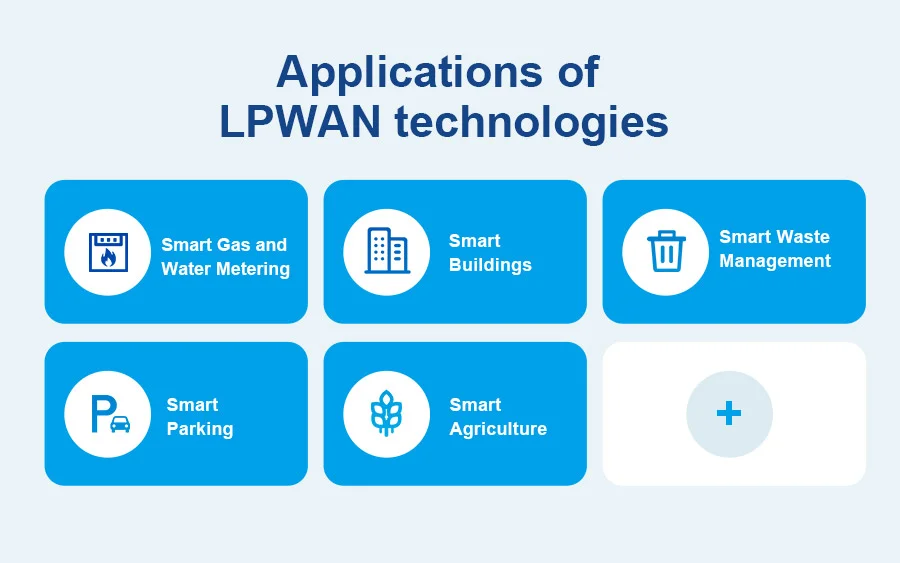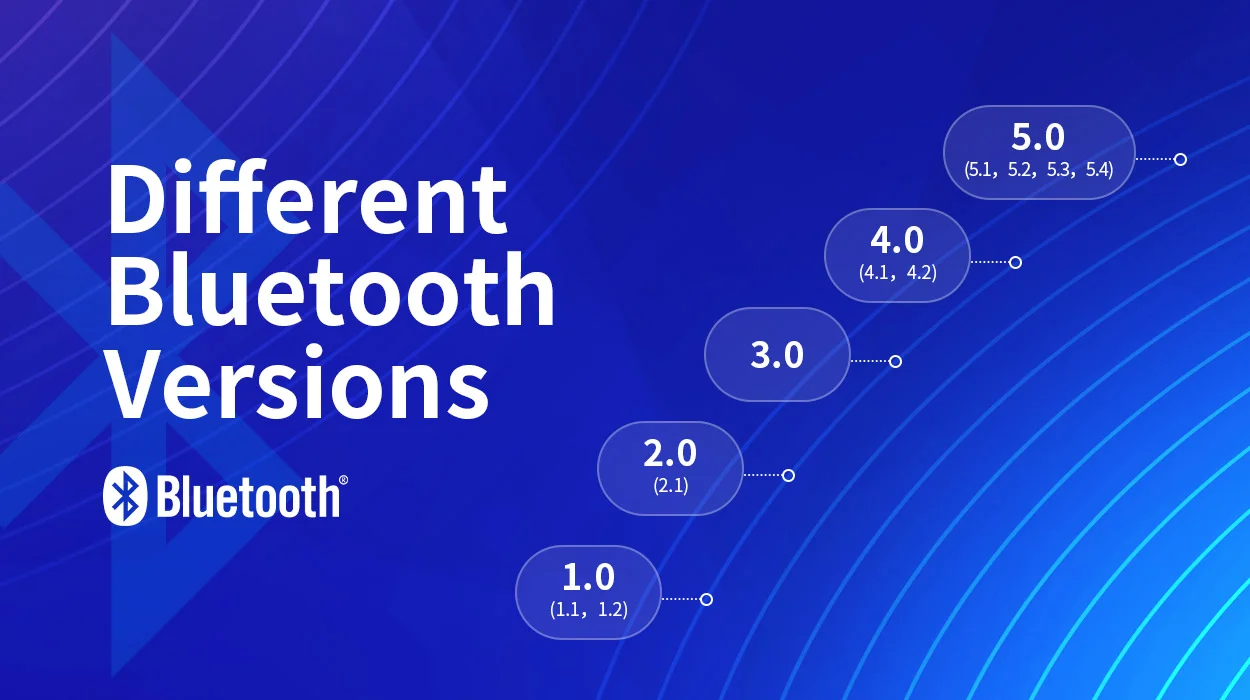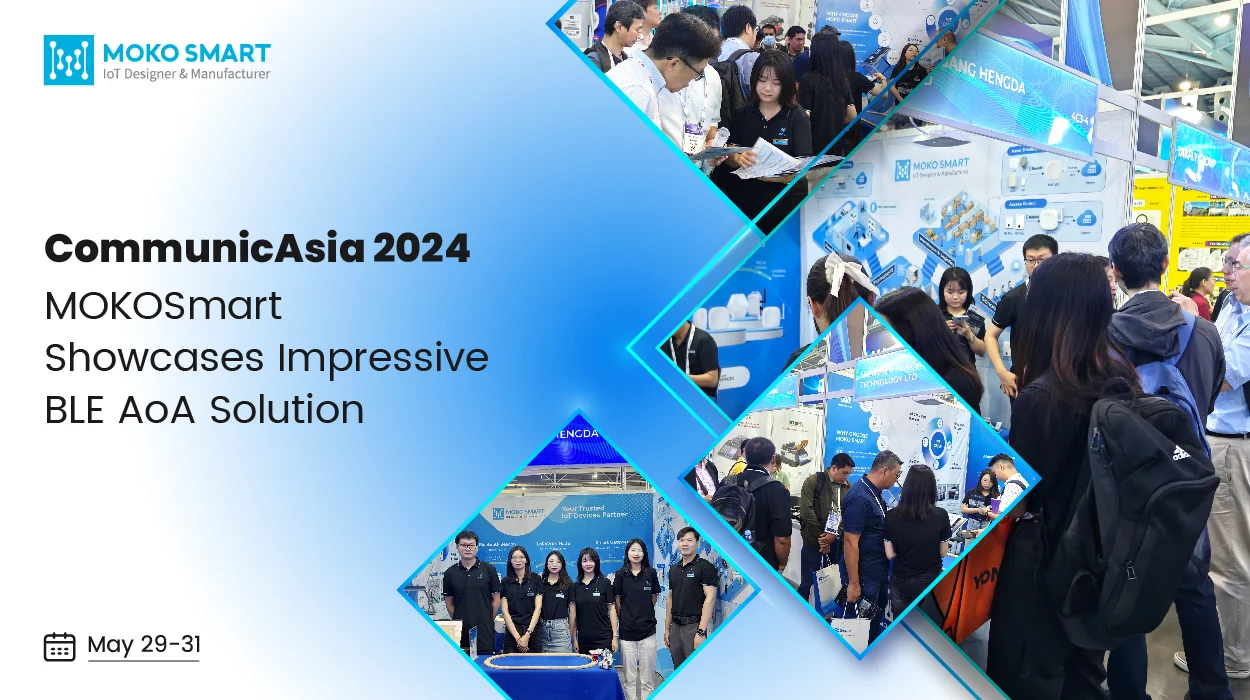Today, the remarkable strides in IoT technologies have made once-impossible connections between individuals and devices a reality. LPWAN has emerged as a hot topic in the IoT world, offering solutions previously unattainable. For short ranges, we had things like WiFi, Bluetooth, Zigbee and others. And for longer distances, there were 2G, 3G, 4G cellular networks and such.
But if you looked at these wireless technologies based on their power needs and range, you’d notice there was a gap for low-power, long-range options. That’s the niche LPWAN tech fits into perfectly. It fills that short-battery-life, go-the-distance void that was missing from the lineup of wireless communication options we had before.
What is LPWAN
LPWAN, or Low Power Wide Area Network (sometimes also called LPWA) is a relatively new term that is not a standard or a single technology. Instead, it is more of a general term that includes various proprietary and open-source protocols. In essence, LPWAN refers to a family of wireless networks designed for low-power, long-range communication between devices.

The communication distance of LPWAN technologies ranges from a few kilometers in urban areas to 10 more kilometers in rural areas. This essentially signifies a communication of getting more efficient and cost-effective – i.e. we are able to maximize the range with less power consumption. It is assumed that in the near future, LPWAN will embrace wider application in a much more innovative way.
Topology and architecture in LPWAN technologies
From topological structure, LPWANs can be divided into two major categories: star and mesh. In this regard, cellular technologies are typically universal in this regard and support mobility. Star or star-to-star topologies are preferred for LPWANs over mesh networks due to their cost-effectiveness.
At the heart of LPWAN, the other components of a simple architecture of LPWAN include wireless connectivity, the internet, and cloud. The base station/gateway collects data from numerous remotely distributed end nodes and responds to inputs from the LPWAN. The base station/gateway is the border device that receives and demodulates this data and sends it over a standard TCP/IP backhaul link like Ethernet, cellular network, etc., to a back-end server.
For public LPWAN services, data is then forwarded over the network operator’s servers before being sent to the end-user application. In privately managed LPWANs, the data can be routed directly to the end-user’s pre-defined back-end. This ensures that the LPWAN device data is private and secure.
LPWAN standards: cellular LPWA and non-cellular LPWA
Before delving into LPWAN technologies, it’s crucial to understand the primary categories they fall under. LPWANs can be broadly classified into two groups: those operating within unlicensed frequency bands (like LoRa and SigFox), and cellular technologies functioning within licensed frequency bands and adhering to 3GPP standards (such as LTE-M and NB-IoT). Below, we’ll explore some actively deployed LPWAN technology options.

Cellular LPWAN (Licensed Spectrum)
Cellular LPWANs require authorization from governmental or regulatory bodies and typically leverage existing network operators’ infrastructure. However, they require a reliable device-to-base station connection, so it’s more suitable for densely populated areas like urban centers, residential zones, and industrial parks. The cellular LPWAN standards include EC-GSM-IoT, LTE Cat. M1 (LTE-M) and NB-IoT, operating within the LTE spectrum (700MHz-3.5GHz).
EC-GSM-IoT
EC-GSM-IoT or Extended Coverage GSM IoT was initially introduced by 3GPP in Release 13. It is a cellular LPWAN technology based on eGPRS, aiming to leverage the existing mobile networks and infrastructure (mostly 2G/GSM) to establish remote IoT communications. It uses licensed spectrum to provide reliable and secure communications. Compared to other cellular technologies, GSM offers wider coverage. Its improved version, eGPRS/EDGE, maintains this advantage while supporting higher data rates.
Narrowband IoT (NB-IoT)
NB-IoT (Narrowband Internet of Things) is an LPWAN radio technology standard developed by 3GPP for connecting IoT devices. As a 3GPP CIoT technology, NB-IoT further defines the wireless interface for IoT communication compared to EC-GSM-IoT and LTE-M. Operating within licensed spectrum bands, it utilizes a narrow bandwidth of around 180kHz. NB-IoT was standardized through collaboration between 3GPP and leading telecom equipment vendors like Nokia, Huawei, and Ericsson.
| Standardization | 3GPP |
| Coverage | Urban (1km), rural (10km) |
| Bandwidth | 200 KHz |
| Frequency | Licensed LTE bands |
LTE-M
LTE-M (LTE-Machine-to-Machine), also known as eMTC (Enhanced Machine-Type Communication), is another 3GPP LPWAN IoT technology derived from LTE. It supports higher data rates and mobility (up to 350 km/h) compared to NB-IoT. LTE-M operates in licensed spectrum, coexisting with 2G, 3G, 4G, and 5G cellular networks.
LTE-M was initially termed Low-Cost MTC in 3GPP Release 12 and later renamed to eMTC in Release 13. Enhancements across 3GPP releases have expanded LTE-M’s capabilities. Releases 14 and 15 enabled support for enhanced coverage levels with mobility. Release 14 added VoLTE (Voice over LTE) capability. Release 15 built on these with new use cases for higher mobility IoT devices. Release 16 continued the evolution with improvements for coexistence with 5G New Radio (NR).
| Standardization | 3GPP |
| Range | 1-10 km |
| Bandwidth | 1.4 MHz |
| Frequency | Licensed LTE bands |
Non-Cellular LPWAN (Unlicensed Spectrum)
Non-Cellular LPWANs operate within unlicensed ISM frequency bands and don’t rely on network operator infrastructure. Devices transmit data directly or through gateways to application/network servers. Besides LoRa, other non-cellular LPWANs include Sigfox, Weightless, RPMA, Symphony Link, and Wize, DASH7, etc. utilizing the Sub-GHz frequency band with communication speeds ranging from ~100bps to 250kbps and distances from 2km to 100km. Non-cellular LPWANs are typically deployed in remote areas with limited cellular coverage, mountainous regions, islands, and for dedicated enterprise network implementations.
LoRa/LoRaWAN
LoRa is the PHY specification of the protocol stack, specifically referring to the proprietary Chirp Spread Spectrum modulation developed by Semtech. The LoRaWAN standard defines the MAC layer protocol and system architecture operating above the LoRa PHY layer, maintained by the LoRa Alliance, which is rapidly growing with nearly 500 member companies globally.
LoRa is primarily intended for uplink communication from multiple end devices to gateways, using coded messages across different channels and data rates to reduce collisions and increase gateway capacity. It’s well-suited for applications requiring small data payloads and infrequent communications in both urban and rural/remote areas. A single LoRaWAN gateway can handle connections from numerous nodes and end devices.
| Standardization | LoRa Alliance |
| Range | Urban (5km), rural (15km) |
| Bandwidth | 125 KHz and 250 KHz |
| Frequency | 169 MHz, 433 MHz (Asia), 868 MHz (Europe) and 915 MHz (North America) |
Sigfox
Sigfox is one of the non-3GPP LPWAN technologies that has seen widespread adoption. It is a proprietary LPWAN technology named after the company Sigfox that first introduced it. It utilizes ultra-narrowband radio to achieve ultra-long range, low-power wireless IoT connectivity.
However, Sigfox’s narrow bandwidth severely limits the downlink capability to transmit data to devices. And the ultra-narrowband may lead to potential interference issues. Despite these limitations, Sigfox remains a prominent LPWAN player and has gained successful traction in Europe.
| Standardization | Standardized in collaboration with ETSI |
| Range | Urban (10km), rural (40km) |
| Bandwidth | 100 Hz |
| Frequency | 862 to 928 MHz |
Weightless
The Weightless Special Interest Group ( Weightless SIG) was established in 2008, aiming to standardize LPWAN technology. The promotor group members include Accenture, M2COMM, ARM, Telensa, and Sony Europe.
Weightless consists of three variants tailored for different application scenarios: Weightless-W, Weightless-N, and Weightless-P. Weightless-W operates in the TV white space (TVWS) band and has a more complex deployment. Weightless-N is similar to Sigfox, being a narrowband protocol running in the sub-GHz unlicensed band, utilized by NWave. Overall, Weightless-N and Weightless-P have received more attention and deployment compared to Weightless-W.
Symphony Link
Symphony Link is an LPWAN protocol developed by Link Labs, a LoRa Alliance member company. While Link Labs uses Semtech’s LoRa physical layer chipsets, they have implemented their own custom MAC layer software stack called Symphony Link, instead of using the open LoRaWAN specification.
Compared to the LoRaWAN standard, the key differences in Symphony Link are some enhanced network capabilities such as reliable message delivery and dynamic network expansion by adding gateways.
Applications of LPWAN technologies
LPWAN is the winner regarding range and power consumption. Utilizing LPWAN makes it possible to collect data from sensors remotely and track over long distances. In this section, we will explore some of its practical use cases.

Smart Gas and Water Metering
Automated meter reading systems utilize LPWANs for remote wireless collection of utility consumption data including electricity, gas, and water. Gone are the days for operators to check and record the data manually. Users can also gain visibility into the amount of consumption data they are using daily.
Smart Buildings
Inside the buildings, LPWANs are utilized across residential, commercial, and industrial facilities to make them smarter. In-home settings, smart home devices like smart locks, HVAC systems, and lighting can be integrated and centrally managed through LPWAN. In office and commercial buildings, LPWAN makes it possible to centralize monitoring of space occupancy and security systems like door sensors.
Smart Waste Management
Smart waste management is becoming more widely used for smart city initiatives. Sensors installed within trash cans can monitor fill levels, transmitting data over LPWAN to the central system. When predetermined fill levels are reached, alerts are generated for timely collection and disposal. Moreover, it is possible to acquire location information on waste trucks by equipping LPWAN trackers with them.
Smart Parking
In smart parking systems, LPWAN technology makes it possible for real-time monitoring and management of parking space occupancy. Sensors installed in parking slots can accurately detect occupancy status. Users can check available parking via a mobile app and pay remotely for parking.
Smart Agriculture
LPWANs is expanding into smart agricultures systems. Farmers can install various sensors (soild moisture, temperature, humidity, light, etc.) in fields. They can then collect data remotely from those sensors utilizing LoRaWAN or other LPWANs like NB-IoT.
Popular comparison of licensed vs unlicensed LPWAN
Given the numerous LPWAN technologies available, a judicious selection is crucial. According to IoT Analytics’ market research estimates, by 2024, over 97% of LPWAN systems will be deployed using LTE-M, NB-IoT, Sigfox, or LoRa technologies. Therefore, we’ll compare the top 4 LPWAN technologies: NB-IoT, LTE-M, Sigfox, and LoRa.
A comparison table of NB-IoT vs LTE-M vs LoRaWAN vs Sigfox
| LTE-M | NB-IoT | LoRaWAN | Sigfox | |
| Specifications Authority | 3GPP | 3GPP | LoRa Alliance | Proprietary |
| Frequency Band | Licensed LTE Bands | Licensed LTE Bands | Unlicensed ISM Bands | Unlicensed ISM Bands |
| Maximum Range | Approx. 10 km | Approx. 10 km | Approx. 15 km | Approx. 40 km |
| Power Consumption | Low | Low | Low | Ultra-Low |
| Throughput | 200kbps | 1mbps | 50kbps | 600bps |
| Device Battery Life | 10+ years | 10+ years | 15+ years | 15+ years |
| Two-way Communications | Yes | Yes | Yes | Yes |
| Security | 3GPP(128-256 bit) | 3GPP(128-256 bit) | AES 128 bit | AES 128 bit |
| Localization | Yes | Yes | Yes (TDOA) | Yes (RSSI) |
| Cost | Moderate | Moderate | Low | Low |
Making the right LPWAN choice
NB-IoT is a 3GPP LPWAN technology that leverages existing LTE/GSM networks to provide low bandwidth connectivity for IoT devices. It enhances device power consumption, system capacity, spectrum efficiency and deep coverage performance, suiting industrial, building automation, smart city, health monitoring and disaster response IoT use cases.
LTE-M targets similar applications as NB-IoT but with higher bandwidth to enable greater data rates and tighter security, though at higher power consumption levels. It suits applications requiring higher throughput like video monitoring where power constraints are less stringent.

Sigfox and LoRaWAN are non-3GPP technologies operating in unlicensed spectrum. Their narrow bandwidths enable ultra-low power operation for infrequent small payload transmission from endpoints requiring multi-year battery life, but with low data rate constraints. Sigfox prioritizes low power and simple deployment but lacks downlink for firmware updates. LoRaWAN supports bidirectional device management at a low cost. Both can serve smart agriculture, asset tracking and related low throughput IoT monitoring scenarios.
LPWAN is the future
As a rapidly evolving new technology, the LPWAN landscape is in a state of development and has not yet matured. With numerous market participants, the winners have not been clearly established, especially given the uncertain pace of market expansion. The long-term performance of each LPWAN variant also remains uncertain, as many are still in initial deployment phases with a lack of comprehensive, large-scale real-world testing.
In fact, research from ABI Research indicates a projected surge in IoT device adoption, with an estimated 5.3 billion IoT devices forecasted to leverage LPWAN technologies by 2030. It’s psomising that LPWAN is the fastest-growing connectivity domain within the market. Driving this growth is the demand for use cases such as remote monitoring, which require infrequent data transmissions and battery-powered operation, characteristics that LPWAN technologies are particularly well-suited to address.
Get the best LPWAN IoT devices with MOKO
As a leading IoT device manufacturer, we offer versatile and reliable LPWAN end-node devices. Our LoRaWAN and Cellular tracker delivers exceptional tracking performance. Speak with our IoT experts for solution suggestions.
CONTINUE READING ABOUT LPWAN
























